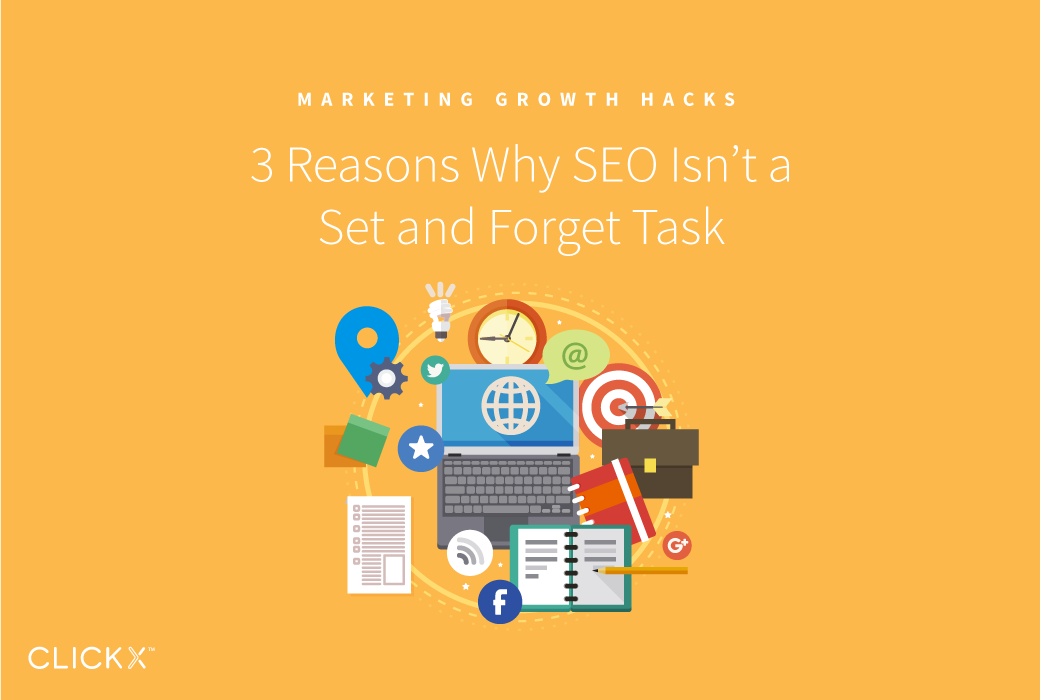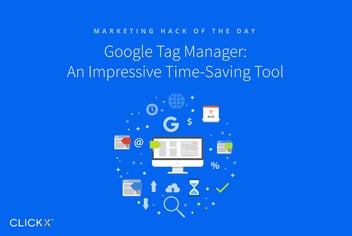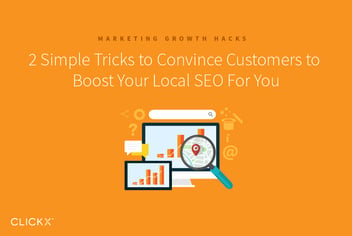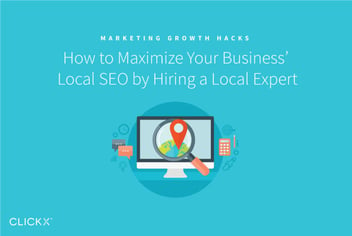3 Reasons Why SEO Isn’t a Set and Forget Task
Simply put, Search Engine Optimization (SEO) does not have an on or off button. It’s a complex game that requires foresight and patience to net positive results, and you simply cannot automate the process.
However, it isn’t difficult to get ahead if you take a practical approach. It’s possible to automate analytics, keyword, and conversion tracking, but in the end, you must still interpret that data accurately.
In this post, we’ll guide you on incorporating SEO into your content marketing. We’ll give you three reasons why you should take a more hands-on approach to your SEO over the long-term, and how to go about taking some action.
Let’s get started!

Key Takeaways
- Maintaining back end SEO settings is important to output valid code.
- Auditing every page helps to maintain freshness and relevance.
- Tracking shifts in search engine algorithms will ensure you don’t suddenly lose all of your hard work.
Reason 1: Even the Set and Forget Tasks Need Attention
As we said, SEO is not a toggle switch on your website, but there are several elements you can leverage initially that are easily forgotten about. From installing plugins to analytics, there are several actions you could be forgiven for putting to the back of you mind once set.
[Tweet “Even one-off tasks need to be maintained for SEO.”]
Hold onto your horses though, because this is technology we’re talking about. Software gets updated, implementations change over time, and even the simplest of these need attention for proper maintenance—otherwise, you risk violating current SEO standards.
How to Maintain Back End SEO Settings
While there are nearly infinite ways you could be optimizing your site, we’ll keep to the fundamentals here. We recommend having the following in place at bare minimum, and that you follow these maintenance guidelines for best results:
- Plugin maintenance: Be sure to keep plugins such as Yoast SEO up to date to avoid outdated optimization output.
- Website design: It’s easier than you think for your website’s design to deteriorate as you make (seemingly) trivial updates over time. To avoid this, do a monthly check for site speed, performance on smart devices, and obtain user feedback on the user experience.
- Webmaster tools: Connecting to Google and Bing’s respective webmaster tools is always a good idea. However, you’ll need to monitor these for any errors or issues that pop up.
- Analytics: Even after installing a solution such as Google Analytics, you’ll need to check your analytics reports. Don’t forget, you can also set up goal tracking along with other powerful features.
- Keyword monitoring tools: There are a plethora of resources to help you follow your SEO keyword rankings, such as our Clickx App. Like analytics, they can be used to measure how successful your SEO efforts are.
Taking the time over maintaining these will go a long way to ensure you’re ahead of the game.
Reason 2: Every Page Needs Unique Search Engine Optimization
Don’t get us wrong—general optimization is important. However, each page of your website needs optimization for its own unique keyword too.
This involves writing natural sounding content that fits your keyword goals for each and every page. It’s a simple (though time-consuming) task that you shouldn’t neglect. What’s more, relevance and freshness are both ranking factors on search engines, meaning your content needs to be up to date at all times.
How to Audit Pages for Unique Optimization
Managing to keep all of your website’s pages up to date sounds like a Herculean task. It can be, but you can start by strengthening your weakest links:
- Identify weak pages using your analytics and monitoring tools to look for low traffic and high bounce rates.
- Once you’ve identified them, audit those pages, optimizing them to maximize their potential.
If you dedicate to updating your ten weakest pages every month, it won’t be too long before your site is up to speed!
Reason 3: SEO Algorithms Change Regularly
Alright, so now you’re maintaining your website regularly and have audited each page. What’s next?
Well, Google changes its algorithm all the time—by that we mean between 500–600 updates per year. Bing is another important player, particularly with its firm grasp on the voice search market. The rise of this technology will continue to change how search works, similarly to conversational style search.
[Tweet “Google updates its algorithm between 500—600 times per year.”]
With this in mind, it’s important to watch for any algorithm changes, because your search engine rankings could take a dramatic hit. If that happens, you should able to find what’s changed, and fix your site accordingly.
How to Monitor SEO Algorithm Updates
Just to ease your mind, you’re not expected to stay up with each of the hundreds of updates Google pushes out per year. That would drive you insane, and would not be an effective use of your time. Instead, you can use a monitoring tool such as the Clickx App, which watches the status of target keywords in search results for you.
Most of the time, everything will proceed as usual—but sometimes, you’ll see inexplicable changes. When that happens, check in on industry publications (such as Search Engine Land, Moz, and Search Engine Journal) to see whether there is a change you should adjust to.
Bonus Reason: Your SEO Needs to Adapt to Current Technology
On a larger scale, search engine algorithms fall into line with industry best practices. These are the guidelines that drive changes to the underlying framework, and by following them, you’re future-proofing your work as much as possible.
However, the only reason these practices get updated in the first place is because of new technology or the abuse of old algorithms. It means if you don’t look to update your strategy, your site will fall behind your competitors.
To give you an idea, mobile best practices were not initially a concern for developers. However, with the rise of smartphones, mobile is now an integral piece of the puzzle. To that end, Google recommends responsive design, presumably serving AMP on the side.
Meanwhile, buying backlinks was once the easiest way to boost SEO juice. These days, Google blacklists anyone who participates in such schemes. If you want backlinks, you need to earn them instead.
How to Keep Up With SEO Technology
If you’re also monitoring your SEO algorithm updates, you can kill two birds with one stone. Best practices are the sorts of things you can check on annually, and as the rapid development of technology continues, touch base with the SEO publications we mentioned earlier. You may be surprised to find you only need to make incremental adjustments. Even so, it’s good to calibrate your approach to the most accurate information out there.
Conclusion
SEO is not a magic button that can be pushed to skyrocket your site up the search rankings. It’s the culmination of various on-going efforts, all striving to please the search engine gods. Get one wrong or forget about a vital piece, and you may find your site booted off the front page.
Understanding why SEO isn’t something you can flip a switch for will help you to formulate and act upon a strong plan. Here’s a handy checklist to review:
- Check in on even the most innocuous set and forget tasks every few months.
- Optimize each page for its unique keyword, remembering to audit for outdated or bad information.
- Look out for sudden drops in ranking, and check industry publications to see if there are algorithm changes you need to adjust for.
- Be aware of any shift in best practices on an annual basis.
What aspects of SEO are you forgetting to maintain? Let us know in the comments section below!



